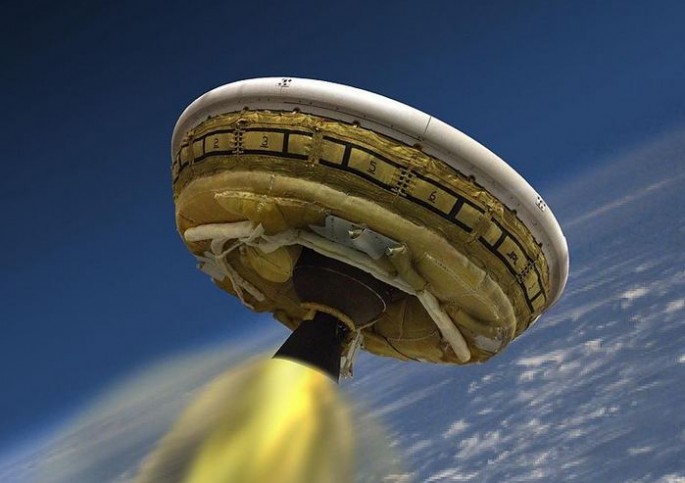NASA's Low-Density Supersonic Decelerator (LDSD), a flying saucer that will one day transport cargo to Mars, will take to space in June.
NASA said large high-altitude balloons will loft the LDSD into space in a new test to examine the capabilities of the Supersonic Inflatable Aerodynamic Decelerator (SIAD), an eight meter long, doughnut-shaped air brake, and the Supersonic Disk Sail (SSDS) parachute, the largest supersonic parachute ever deployed.
In the June test, LDSD will lift-off from the U.S. Navy's Pacific Missile Range Facility on Kauai, Hawaii. The vehicle will be lifted by the balloons before being released for descent to Earth.
The test will be the first of two such tests scheduled this year. NASA said the tests will focus on the SIAD-E and SSDS technologies, incorporating lessons learned during the 2014 test. Changes planned for the SSDS parachute include a rounder shape and structural reinforcement.
The UFO-shaped LDSD is designed to land massive payloads on Mars, asteroids and other planets. LDSD will be critical to supporting the United States' manned Mars mission scheduled for the 2030s.
LDSD is designed to inflate during descent and start spinning to create atmospheric drag, slowing the payload for touchdown. It weighs 7,000 pounds and is 15 feet in diameter.
"The technologies will not only enable landing of larger payloads on Mars, but also allow access to much more of the planet's surface by enabling landings at higher-altitude sites," said NASA.
LDSD will undergo a spin table test on March 31. The video will be broadcast on the Ustream channel for Jet Propulsion Laboratory starting at noon EDT. You can watch the video at http://www.ustream.tv/NASAJPL2.
The new event will be hosted by Gay Hill of JPL. Viewers watching the spin table test will be able to send questions to NASA engineers through the Ustream website or Twitter, using the hashtag #AskNASA. The event will stream from 12:00 p.m. to 1:00 p.m. EDT.



























